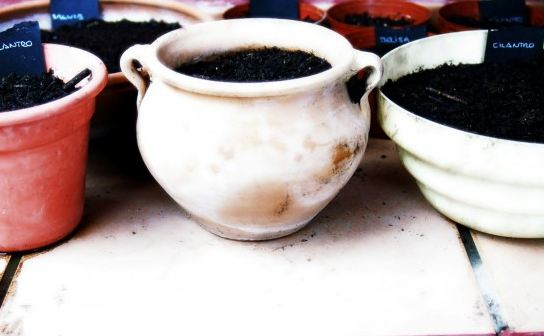Growing your own fruits and vegetables is a commendable practice, while keeping a decorative plant at home is also beneficial in many ways. By keeping and taking care of these living things, we’re able to get cleaner air to breath as well as a sense of accomplishment. The produce they give us is just another benefit, but it comes after putting in some time and hard work. Here are some basic tips for maintaining a garden if you have one.
Fertilizing your plants is one way to ensure their health and productivity; however, there’s no need to break the bank with expensive store-bought bags. With the right tools and a bit of determination, it’s possible to turn your everyday scraps into useful, homemade, zero waste fertilizer. If you’re intrigued, keep reading:
Making Compost
One of the best ways of making zero-waste fertilizer is to use any organic matter you pile up each day. This includes scraps from vegetables, fruit peels, old paper, etc. You can then place these in a compost bin and let the mixture decay for a while. If there are issues with the smell, you might want to invest in some charcoal filters.
Your homemade compost might be enough for a tiny garden or some window boxes. This is also a good way to use up every last bit of kitchen waste, so start here if you’re a beginner at making your own fertilizer.
Using Aquarium Water
Old aquarium water has a lot of nutrients such as potassium, phosphorus, nitrogen, and ammonia. When you take it out of the tank, it also has fish waste in it, which contains a lot of useful microorganisms. These can be useful to make plants grow healthy and strong. Plus, it’s nice to recycle that water instead of just throwing it away.
However, keep in mind that a saltwater tank wouldn’t have suitable water for any plant. Even if it’s a freshwater aquarium, you have to be careful about the added chemicals. It’s best to avoid using such water for edible or fruit-bearing plants.
Ground Egg Shells
A medium-sized household might use up several eggs a day. It’s a pity to waste all that calcium, so utilize it as fertilizer for your plants instead. Eggshells are 95 percent calcium carbonate, which makes it similar to lime. Since lime is used for reducing acidity in the soil and improving its fertility, we may assume that eggshells can do the same.
It’s possible to make a slow-release fertilizer from your eggshells by rinsing them out, drying them, and then grinding them into a powder.
Ash
If you have a fireplace and use it often, chances are that there’s a lot of wood ash left in there. A wood-fired oven or fire pit might have the same remnants. Ash contains several substances that are good for pants, including calcium, magnesium, and potassium. These are all useful for improving photosynthesis, providing resistance to disease, and enhancing the quality of a plant’s fruit and seeds.
You can use wood ash as lime, but be careful not to use it with plants that thrive on soil acidity. In any case, you’d have to measure the pH level of your soil and use your fertilizer accordingly.
Compost Tea Extract
You can make a liquid fertilizer by soaking compost, manure, or some other nutrient-rich substance in some water. This is usually called compost tea. The resulting extract is a fertilizer that’s rich in nutrients but with a relatively low number of microorganisms.
You can make your extract by putting a shovelful of compost or manure inside a large bucket of water. The bucker should be of a standard size that contains about five gallons of water. Mix the compost in the water and leave it be for some hours. If you want to get the most out of it, let it be for three days. Next, strain the liquid and use it for fertilizing purposes. The liquid form will help it work much more quickly than solid compost or manure.
Using Tea Made of Weeds
It might sound suspicious to use ‘weed tea’, but we’re just referring to the imposter weeds in your garden. These are living things as well, so we can use them to make a tea extract as well as in our compost bin.
While weeding, just collect the weeds inside large garbage bags and save them for later. Once you have a bag full, put the weeds in some water. The water will drown the weeds and make use of the nutrients that come out of it. After steeping for 24 hours, this liquid can be diluted and used for getting the nutrients back into the soil.
Rabbit Manure
If your kids have some rabbits as pets, here’s a chance to utilize their waste in something useful. Rabbit manure is filled with phosphorus, nitrogen, and several other nutrients. It does have more nutrients than the manure we can get from chickens, horses, or cows. What even better is that rabbit manure has the ideal nitrogen: carbon ratio due to the animal’s herbivorous eating habits.
Since this is cold manure, you can add it directly to the soil without the risk of burning any plants. It’s also odorless and easy to manage due to its dryness. You can use rabbit manure for fertilizer at any point during the year or add it to your homemade compost. They break down very easily, giving the nutrients to your plants without much effort.
Conclusion
Whether you have a vertical garden in an apartment or a huge greenhouse on your grounds, making your own zero-waste fertilizer is an excellent choice. You’d be doing your bit for the planet and avoiding a lot of potentially harmful side effects of the store-bought version. Get a compost bin or pick any of the other options and start making the switch today; it’s never too late to go green.

